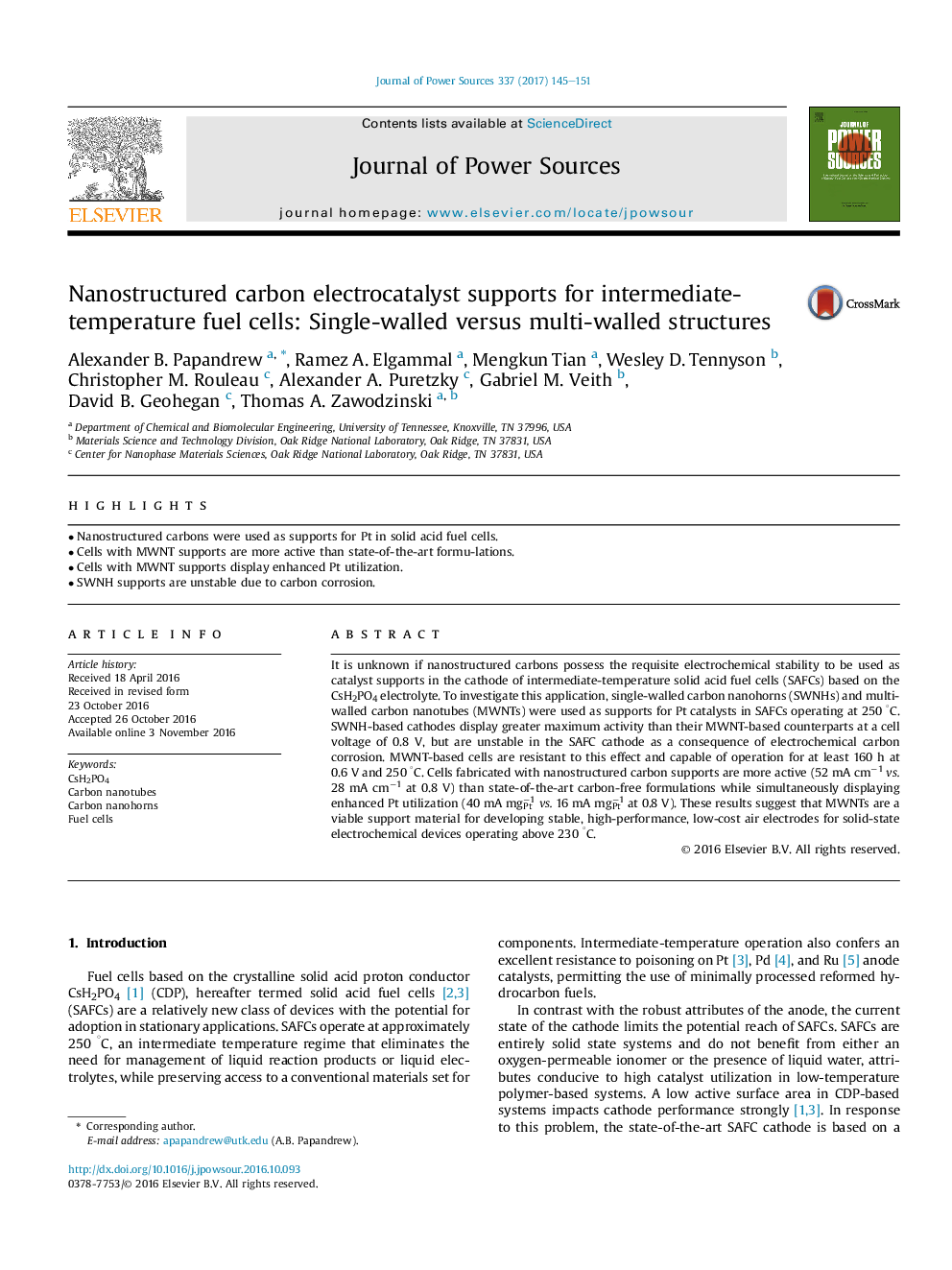| Article ID | Journal | Published Year | Pages | File Type |
|---|---|---|---|---|
| 5149997 | Journal of Power Sources | 2017 | 7 Pages |
Abstract
It is unknown if nanostructured carbons possess the requisite electrochemical stability to be used as catalyst supports in the cathode of intermediate-temperature solid acid fuel cells (SAFCs) based on the CsH2PO4 electrolyte. To investigate this application, single-walled carbon nanohorns (SWNHs) and multi-walled carbon nanotubes (MWNTs) were used as supports for Pt catalysts in SAFCs operating at 250 °C. SWNH-based cathodes display greater maximum activity than their MWNT-based counterparts at a cell voltage of 0.8 V, but are unstable in the SAFC cathode as a consequence of electrochemical carbon corrosion. MWNT-based cells are resistant to this effect and capable of operation for at least 160 h at 0.6 V and 250 °C. Cells fabricated with nanostructured carbon supports are more active (52 mA cmâ1vs. 28 mA cmâ1 at 0.8 V) than state-of-the-art carbon-free formulations while simultaneously displaying enhanced Pt utilization (40 mA mgPtâ1vs. 16 mA mgPtâ1 at 0.8 V). These results suggest that MWNTs are a viable support material for developing stable, high-performance, low-cost air electrodes for solid-state electrochemical devices operating above 230 °C.
Related Topics
Physical Sciences and Engineering
Chemistry
Electrochemistry
Authors
Alexander B. Papandrew, Ramez A. Elgammal, Mengkun Tian, Wesley D. Tennyson, Christopher M. Rouleau, Alexander A. Puretzky, Gabriel M. Veith, David B. Geohegan, Thomas A. Zawodzinski,
